Tomatoes are readily available in the market but we see tomato products more often than the tomatoes themselves such as tomato paste, sauce, puree, etc. Each with its own standards and specifications.
- Tomato paste
Basically concentrated tomato sauce, tomato paste is. You may make tomato paste by cooking down tomatoes, removing the skin and seeds from the mixture, and then cooking the sauce until it thickens. Stabilizers such citric acid, salt (there are also no-salt-added variants), and sometimes herbs and spices are added to manufactured tomato pastes.
Additionally, there are varieties of tomato paste that are triple- and double-concentrated, making them even more strong. The advantage of using tomato paste over other canned tomatoes is that you get the rich tomato flavor without all the excess water, making it excellent for meals where you don’t want a lot of moisture, like meatloaf or taco filling.
- Tomato puree
To make tomato purée, first, soften the tomatoes with a little heating, and then purée the result into a liquid. In contrast, tomato paste requires more cooking time than its puréed equivalent. Before continuing to simmer the tomatoes to reduce the concentrate into a thick paste, they are filtered to remove the seeds and skins.
Compared to tomato paste, tomato purée is substantially thinner.
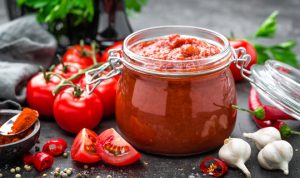
A can of purée would spread and fill the pan like a thick broth if you were to pour it into an unheated pan. The paste’s firm consistency would cause it to largely remain intact if you were to empty a can of it into an unheated pan.
- Tomato sauce
a tomato-based product that is thicker than tomato juice but not as thick as tomato puree. Generally, adding herbs, spices, onion, and garlic enhances the taste of the dish. Most grocery shops sell tomato sauce in commercial cans. It is used in many different cuisines and as the foundation for other sauces.
The texture and taste intensity of tomato paste, tomato puree, and tomato sauce varies. The taste is more intense when the consistency is thicker. The consistency of tomato sauce varies from thin to thick, with tomato paste being the thickest.
Tomato paste specification
This concentrated tomato product contains solely fresh tomatoes that have been cooked down to a concentrated form. The percentage of dry matter in tomato paste varies from 7 percent for tomato purée to 36 percent for triple concentrate, depending on the kind of product.
It is suggested that the tomato paste used in this recipe be between 28 and 30 percent concentrated to provide a long shelf life after preparation. Red tomatoes (Lycopersicon/Lycopersicum esculentum P. Mill) collected at their optimal ripeness and strained or otherwise processed such that the majority of their skins, seeds, and other tough parts are removed prior to use in the finished product (Codex Stan 57-1981).
The product may not include any genetically modified organisms (GMOs) or radioactive residues or components. This product cannot include microorganisms, harmful or deleterious substances, heavy metals, pesticide residues, or toxins in quantities that pose a health risk. A product must be evaluated for microbiological, chemical, toxin, heavy metal, and pesticide residues in order to be deemed “fit for human consumption.” The supplier must provide lab findings and/or declarations.
Several smaller containers are preferable than a single enormous container. Be important to check with your local authorities before making a purchase to see if food imports have been permitted based on your country’s requirements. Prior to obtaining large quantities, it is essential to examine the influence on local, national, and regional market availability and price.
Unless otherwise specified, the Codex Alimentarius last edition applies to all aspects of the product, including packaging.

National regulations influence the particulars. Specifications for tomato paste are shown in the table below. To verify that the submitted specifications adhere to the firm’s requirements, please contact HQ if the specifications differ from those of the company. Provide a minimum of five cans each batch for laboratory testing.
Tomato products standards
Despite the fact that tomatoes are botanically categorized as fruits for commercial reasons, most people think of them as vegetables since they are typically cooked before they are served to them. There are tomato farms in practically every corner of the globe.
Despite this, the yield per hectare in the Netherlands is 245 tons/hectare, which is the highest in the world. Over the world, tomatoes yield 23 tons of fruit per acre on average. Tomatoes are grown in India at a rate of 9.6 tons per hectare on average per year. Puree, juice, and ketchup prepared from tomatoes are common ingredients in the kitchens of numerous establishments, including hotels, restaurants, and even the occasional house.
It is possible to enhance a wide range of dishes’ flavors by using the components mentioned below. Tomato puree may be used in lieu of fresh tomatoes in numerous recipes to get the same results. Ketchup is a kind of puree that is sweeter and more watered down than the standard puree (Pulp). Tomato sauce has a sweet and sour taste. Complimentary condiments include ketchup and sauce, which are often included with meals and snacks.
Whole canned tomatoes, tomato juice, puree, and paste; ketchup; and tomato sauce are all examples of processed items made from tomatoes. Recent technical developments have had a profound impact on the tomato processing sector. Onion ketchup and puree are all products of the tomato juice production process. Tomatoes are found in all of these goods.

Tomato puree pdf
Tomato purée is a kitchen needs that you may be lacking. Tomato purée is a quick method to prepare and store a bushel of fresh tomatoes for future cooking. It is simpler and thicker than its tasty cousin, tomato sauce. Tomato purée may be used to make tomato sauce or soup.
It may be used to boil rice for a colorful side dish or to make a show-stopping paella with rice and seafood. Oh, and it makes an excellent foundation for homemade barbeque sauce. All you need is a knife, a blender, and a little time to load your freezer with tomato purée that you can use all year.
- Purée or blend
Many preservation purists believe that a food mill is an ideal instrument for creating tomato purée, although an immersion blender, food processor, or normal blender will all work well. If you’re using an immersion blender, you can put it directly into the saucepan to purée. Allow the cooked tomatoes to cool for approximately 10 minutes before mixing in a food processor or stand blender. You may need to work in batches depending on the size of your blender.
- Storage
You may use fresh tomato purée straight away or freeze it for later use. You may use any freezer-friendly storage technique you like, but I prefer zip-top freezer bags since they freeze flat (take up less room) and defrost rapidly. Freeze the purée in eight- to 15-ounce increments, as needed for most recipes. Label the bags and freeze them for up to six months.
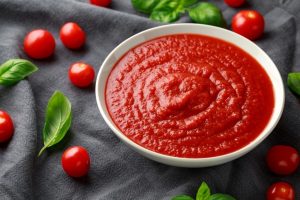
Codex standard for tomato sauce
Concentrates of Scope
This standard applies to tomato concentrate, which happens to be a key ingredient in the production of tomato paste. The standard is provided for direct consumption, as well as for catering needs or, if required, for repackaging. When a product is designated as being intended for further processing, this standard also applies to that product.
Products commonly referred to as tomato sauce, dill sauce, ketchup, or similar products, which are highly seasoned products of varying concentrations containing distinguishing ingredients like pepper, onions, vinegar, etc. in quality that maternally alter the flavor, aroma, and taste of the tomato component, are excluded from the standard.
These products include “pizza toppings” and other “home-style” products that contain seeds and skin, as well as “pizza toppings” and other “home-style” (CODEX STAN 57-1981). (1981 CODEX STAN).
- item definition
The item is processed tomato concentrate;
processed by concentrating the juice or pulp produced from generally healthy, ripe red tomatoes that have been filtered or otherwise prepared to remove the majority of coarse or hard components, such as peels; via physical means preserved. The natural total soluble solids content of tomatoes should be at least 7%; nevertheless, they should not be dried down to a dry powder or flake form.
- Designation of a Product
When a tomato concentrate satisfies the following criteria, it may be referred to as “tomato puree” or “tomato paste”: Tomato puree is a tomato concentrate that has no less than 7% and no more than 24% of total soluble natural ingredients.
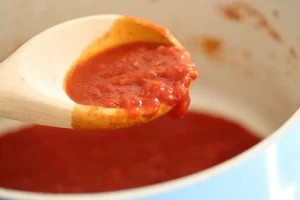
COMPOSITION AND QUALITY FACTORS THAT ARE ESSENTIAL
- Composition
Basic Additives: tomato concentrate that has been processed Other permitted components
- Salt (Sodium Chloride) that satisfies the criteria for food-grade salt (CODEX STAN 150-1985).
- Herbal extracts are made from aromatic plants like basil leaves and spices.
- Lemon juice that has been concentrated or used at full power as an acidulant
- Water
Tomato puree standard of identity
- Identity
One definition The group of foods referred to as “tomato concentrates” are made by concentrating one of the optional tomato elements listed below, or any combination of two or more of them.
- The juice is derived from mature red or reddish-colored tomatoes (Lycopersicum esculentum P. Mill).
- The liquid is made from the peelings and cores of the tomatoes, either whole or in bits, left over after they were prepared for canning.
- The liquid produced by partially extracting the juice from such tomatoes.
The tomatoes are strained to remove the skins (peel), seeds, and other coarse or hard particles in line with a good manufacturing practice. This may be done with or without boiling the tomatoes. The tomato material may be treated with a little quantity of food-grade hydrochloric acid prior to filtering to raise the pH above 2.0. The treated tomato material is then brought back to a pH of 4.20.2 by neutralizing the acid with food-grade sodium hydroxide.
To change the final composition, water may be added. Tomato soluble solids as specified in 155.3 are present in the diet at a minimum of 8.0 percent (e). By using heat sterilization (canning), refrigeration, or freezing, the food is kept fresh. It is heated before or after sealing in order to avoid deterioration when placed in a container that will be kept at room temperature.
- Supplementary ingredients. The following safe and appropriate ingredients may be used in the foods, alone or in any combination:
- Salt (sodium chloride formed during acid neutralization shall be considered added salt).
- Lemon juice, lemon juice concentrate, or organic acids.
- Bicarbonate of sodium.
- Water as described in this section’s paragraph (a)(1), to the extent possible.
- Spices
Tomato paste ASDA
The British grocery chain ASDA Stores Ltd. Its main office is in Leeds, England. When the Asquith family and the Yorkshire-based Associated Dairies firm amalgamated their retail operations, the company was established in 1949. In the 1970s and 1980s, it expanded into Southern England and bought Allied Carpets, 61 sizable Gateway Supermarkets, and other companies including MFI Group.
In order to focus on supermarkets, it sold these purchases in the 1990s. It was traded on the London Stock Exchange up until 1999 when Walmart paid £6.7 billion to buy it. Between 2003 and 2014, ASDA’s market share made it the second-largest supermarket chain in the UK; after that, it slipped to third.
In addition to its primary businesses, the firm also acts as a mobile phone provider and provides support for insurance and payment services.
The Issa brothers (Mohsin and Zuber) and TDR Capital bought ASDA in February 2021. A board membership, “an ownership interest,” and “an ongoing business connection” with ASDA are all still held by Walmart. The agreement was reached after the Competition and Markets Authority turned down a Sainsbury’s purchase proposal.
In Knottingley, Wakefield, West Yorkshire, the Asquith family operated a butcher shop. They grew their company to include seven butcher shops in the neighborhood by the 1920s. Peter and Fred, their sons, eventually joined as founder members of ASDA.
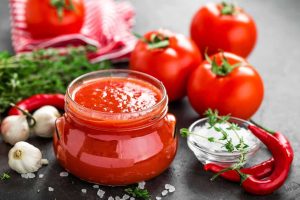
At around the same time, the Stockdale family and Craven Dairies joined forces with other dairy farmers in the West Riding to form J.W. Hindell Dairy Farmers Ltd. In 1949, the business changed its focus and changed its name to Associated Dairies and Farm Stores Ltd. Arthur Stockdale was appointed managing director.



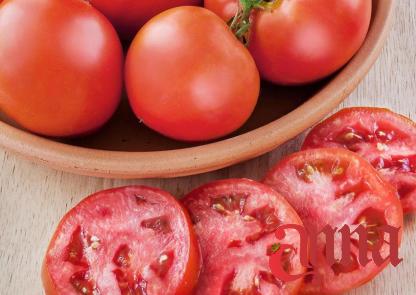
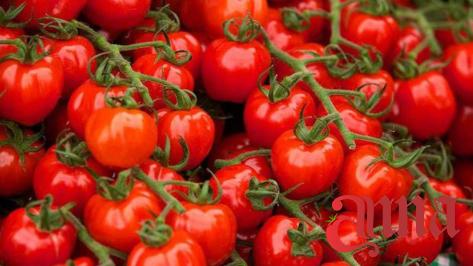


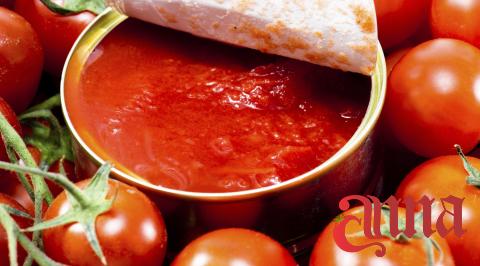

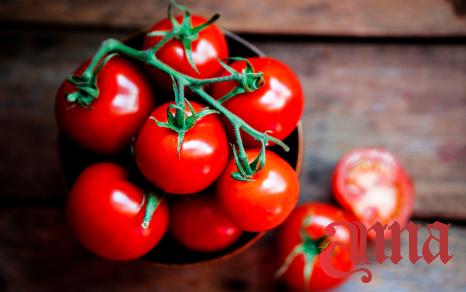
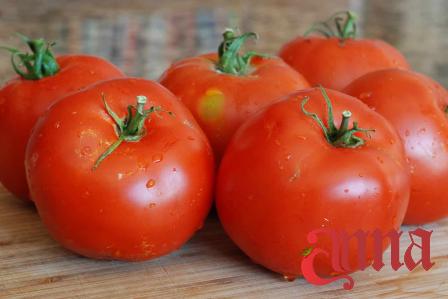
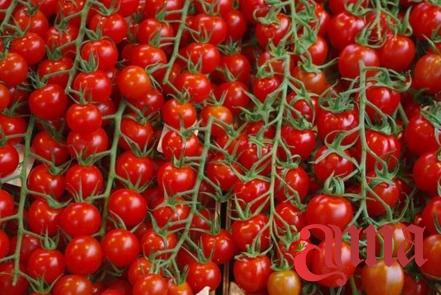
Your comment submitted.